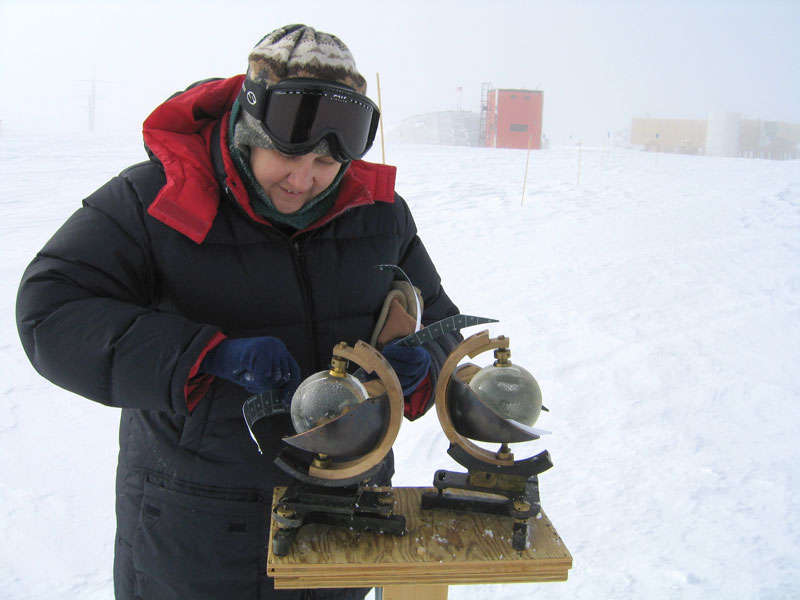Scientists at the South Pole study the atmosphere from ground-level (in the troposphere) to miles above the Earth's surface where satellites are in orbit (the thermosphere). Some studies are to quantify specific gases in the atmosphere whilst others examine the interaction between airborne particles. The pristine air at the South Pole is ideal for assessing the natural and anthropogenic background-levels of atmospheric particles, including constituents that influence climate change such as carbon dioxide, water vapor, surface and stratospheric ozone, and other trace compounds. Solar and terrestrial radiation fluxes are also studied. Research carried out forms part of the US National Science Foundation Ocean and Atmospheric Sciences Program.
The Global Monitoring Division (GMD) of the US National Oceanic and Atmospheric Administration (NOAA) is assessing the long-term build-up of these and other global pollutants in the atmosphere. GMD research at the South Pole takes place in and around the Atmospheric Research Observatory (ARO) and the Balloon Inflation Facility (BIF). The ARO has been operational since 1997 and is located about 500 m from the main station, at the southwest corner of the Clean Air Sector. Atmospheric studies at the South Pole are usually operated within the Clean Air Sector, which has been defined upwind of the station to help ensure that the air in this region remains as pristine as possible.
The US has also established a network of Automatic Geophysical Observatories (AGO) at six polar-plateau locations. These unmanned observatories house instruments such as electomagnetic wave imagers, magnetometers and radio receivers to investigate the electrodynamics of the polar cap. These data help scientists understand the behavior of the solar wind with the Earth's magnetosphere, ionosphere, and thermosphere. By researching high-altitude electrical and magnetic phenomenon at the South Pole, scientists aim to improve our understanding of the Sun's influence on the structure and dynamics of the Earth's upper atmosphere.

